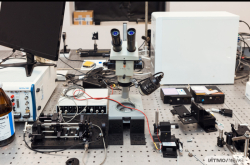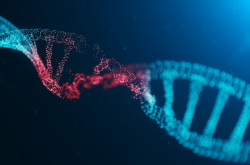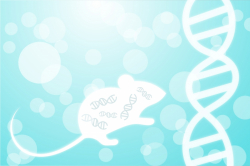The HRS virus is one of the most common causes for respiratory infections in infants and is a common cause of death among the elderly. The mechanisms of its effect on the human body have not been studied thoroughly as of yet, which results in a lack of effective profilactic and theurapetic treatments. The international research team has identified the sections of the virus’s NS1 proteins that might be responsible for suppression of the immune system. The research involved scientists from ITMO University and several universities from the United States: the Washington University in St. Louis, Georgia State University, Icahn School of Medicine at Mount Sinai, University of Texas Southwestern Medical Center and the Emory University School of Medicine.

Respiratory syncytial virus. Credit: wikipedia.org
HRSV contains a specific unstructured protein NS1 which suppresses the body’s immune system. This protein inhibits the interferon response, prevents the maturation of dendritic cells and stimulates the inflammatory process. Scientists have mapped NS1’s three-dimensional structure, i.e. the placement of the atoms in the protein molecule in three-dimensional space, and compared it to other known proteins. It turned out that the structure is similar to a protein of the same virus – HRSV’s matrix protein.
“Knowing the structure is vital for understanding how it functions. The comparison of new proteins to those that have already been studied can help us with that. The structural similarities between NS1 and M are an unexpected discovery; these proteins are not alike in their amino acid sequences. It is possible that they are paralogues, meaning that they have originated from the same protein. Since we know that the M-protein does not participate in immune suppression, our colleagues have managed to determine the parts of NS1 that might be responsible for that function,” – comments Ekaterina Esaulova, one of the article’s authors and a Master’s student at ITMO University.

Credit: depositphotos.com
The main difference between the two proteins is the additional alpha helix present in NS1. To test its properties, the scientists have created recombinant viruses with mutations in that spiral and one that lacked it completely. To test the viruses, they used cell lines; ITMO University’s laboratory participated in analyzing the difference in RNA expression. The resulting viruses were functional, but less pathogenic. Results indicate direct participation of particular sections of NS1 in immune response regulation.
Reference: Srirupa Chatterjee, Priya Luthra, Ekaterina Esaulova, Eugene Agapov, Benjamin C. Yen, Dominika M. Borek, Megan R. Edwards, Anuradha Mittal, David S. Jordan, Parameshwar Ramanan1, Martin L. Moore, Rohit V. Pappu, Michael J. Holtzman, Maxim N. Artyomov, Christopher F. Basler, Gaya K. Amarasinghe and Daisy W. Leung, Structural basis for human respiratory syncytial virus NS1-mediated modulation of host responses, 2017, Nature Microbiology





